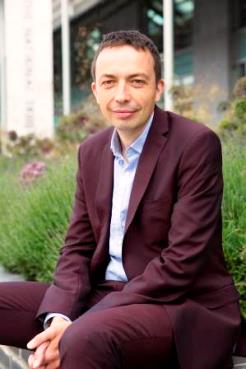June 2016
A couple of months ago I went to a roundtable organised by Defra with Liz Truss to talk about kids and nature. We started by going round the table, hearing from wildlife, education and children’s organisations about their work. Like most of the other groups I told the others about our own successes, and together everyone reeled off the numbers from their own programmes to engage kids with the natural environment - a hundred thousand kids here engaged in a programme of activity, 200 million visits to the natural environment there, a million trees for schools. At the National Trust, we even helped make a film about the issue.
All of this should be helping provide benefits for children and young people themselves as well as helping the natural environment, as set out in plenty of research reports over the years covering children’s health and education, and the link with more pro-nature and pro-environment behaviours.
So what’s the problem if we’re all doing so well? Well, there are probably two issues hidden beneath all of our apparent successes. The first is that some people are missed out in this – the fine detail of Natural England’s Monitor of Engagement with the Natural Environment suggests to me that those from poorer and more urban backgrounds aren’t engaging with the natural environment as much as those from non-urban areas or richer backgrounds.
And secondly, I’m not sure we’re yet seeing young people experiencing nature in an autonomous way, in other words experiencing it on their own terms rather than on the terms set by teachers or organised activities or programmes. Yes, we need organisations to provide opportunities as a start but we need to go beyond that so children can find their own experiences of nature. That means thinking about attitudes in society and also providing opportunities close to home.
So what role is there for Defra in this then? There’s always a tendency for NGOs to call for a “policy” response from central government to any problem. So the central state steps in by switching around spending, introducing new regulations, reorganising itself and others and legislating to make organisations and individuals act in particular ways. This can work (for instance the smoking ban’s beneficial impact on public health or the introduction of the plastic bag charge) but what is needed for the kind of problem we’re talking about here is a collaborative approach with those who are closer to the communities we need to work with.
So on attitudes, Defra should consider the outcomes of their 4 year Natural Connections demonstration project to see what can be done with the Department for Education, local education authorities, schools and teacher bodies to build teachers’ confidence and overcome barriers to participation, including support for teachers and pupils to explore the nature where they are in their local parks and greenspaces.
This is a good foundation but the 25 year plan should also explore how to build on movements to allow kids more autonomy, from closing streets to cars to enable kids to play outside to projects to extend initiatives around children and nature to how to include experiencing nature on the walk to school. There are already initiatives to share good ideas and learning from what works. But more could be done to encourage an approach borrowed from design rather than public policy where rather than trying to write the perfect solution now with the 25 year plan, Defra instead works with others to try things out and learn from users along the way.
In terms of opportunities for kids to experience nature, the National Trust (like others) is already doing a lot, both in terms of enhancing visits by families to our own places (through, for instance, developing further our 50 Things to do Before You’re 11¾ initiative to focus more on experiences of nature) and through the 400,000 visits by young people to our places as part of an educational group.
But more important for reaching those from lower income backgrounds and those in urban areas is to look at opportunities to experience nature closer to home – on the walk to school, in local parks or even through making the Green Belt work more for us as a place to see nature close up, going beyond its core purpose in the planning system of preventing sprawl.
DCLG’s recent pocket parks initiative is welcome but risks being overwhelmed by the scale of cuts to local councils and their ability to look after the park they run. We’re actively working with a range of councils to look at a new model for how parks might be funded and managed so they can withstand the loss of council funding. A key part of this is around how to translate the benefits they provide, including to children, into funding to sustain and enhance them. We’re looking to publish more on the natural capital benefits of parks in the autumn, alongside advice on how to develop the new model we’re suggesting.
Defra is right to think for the long-term with its 25 year plan for the environment and the ambition for this generation to leave the environment in a better condition than we found it. Key to do that is for every child to have the opportunity to experience nature for themselves. That can’t be achieved by some lines when Defra publish their framework for the 25 year plan in July nor in the final fuller plan in the autumn, but only through creating collaboration between government departments and their agencies, local councils and civil society to build on the successes we’ve already had and learn from each other on what works.
Every child matters and every child should have the opportunity to experience nature for themselves.
Richard Hebditch
External Affairs Director
Find National Trust on Twitter @NTExternalAffairs
The opinions expressed in this blog are the author’s and not necessarily those of the wider Link membership




Latest Blog Posts